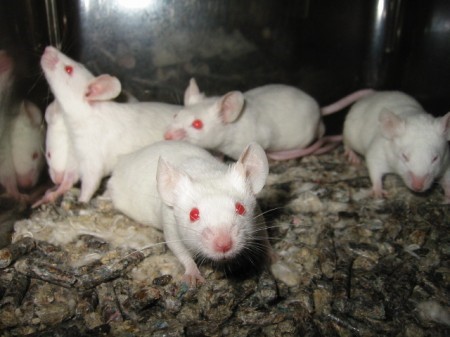

The use of alternative non-mammalian animal models and cellular methods in experiments is increasing globally (photo: Wikipedia).
Among the advantages of the novel methodologies is the possibility of using human cells, leading to higher success rates in the transition from preclinical to clinical trials.
Among the advantages of the novel methodologies is the possibility of using human cells, leading to higher success rates in the transition from preclinical to clinical trials.

The use of alternative non-mammalian animal models and cellular methods in experiments is increasing globally (photo: Wikipedia).
By Ricardo Muniz | Agência FAPESP – In an article published in the Journal of Fungi, scientists affiliated with institutions in Brazil, the United States and Colombia present a comprehensive review of non-mammalian animal and cellular methodologies to replace vertebrates in research on host-fungus interactions.
Alternative methods, both in vitro and in vivo, are currently more affordable and widespread, and show significant potential to replace mammals. In many cases they are faster and cheaper than animal testing, as well as involving highly controlled experimental conditions and quantifiable results.
“Another advantage is the possibility of using human cells, meaning both primary and commercial lineages bred for research purposes and bought from cell banks in the latter case. Using such cells eliminates the problem of the phylogenetic distance between animals and humans, and leads to higher success rates in the transition from preclinical to clinical trials,” said Maria José Soares Mendes Giannini, last author of the article.
Giannini is full professor and head of the Proteomics and Clinical Mycology Laboratory at São Paulo State University’s Araraquara School of Pharmaceutical Sciences (FCFAR-UNESP) in Brazil. Her research is supported by FAPESP via three projects (19/23622-3, 21/14839-9 and 21/03805-6).
An important part of her work involves collaboration with Ana Marisa Fusco Almeida, first author of the article and head of the Laboratory for Development and Validation of Alternative Methods to Assess Bioproduct Safety and Efficacy (LaMABio) at FCFAR-UNESP. Almeida is also supported by FAPESP.
These two researchers develop in vitro and in vivo methodologies to assess toxicity using two-and three-dimensional cultures of various cell lines and alternative animal models such as Zebrafish (Danio rerio), Greater wax moth (Galeria mellonella), Mealworm (Tenebrio molitor), and Caenorhabditis elegans roundworms. These models are used in research on fungal infections to analyze virulence, innate immune response, therapeutic efficacy, and toxicological safety. Their advantages over mammalian models include low cost, lack of ethical problems, easy experimentation, efficiency in terms of time, and the possibility of using many animals per experiment.
They also have several collaborations with pharmaceutical and veterinary medicine companies via specific projects to develop and evaluate antimicrobial products and methods to analyze environmental contaminants, inputs etc., and they participate in FAPESP’s Innovative Research in Small Business Program (PIPE) by contributing to the development of pharmaceutical formulations, predictive methods, and toxicological techniques.
The use of non-mammalian animals and alternative cellular methods in experiments is increasing globally. In October 2008, Brazil enacted legislation (Lei nº 11.794) designed to reduce the use of animals in teaching and research while also monitoring and evaluating the introduction of alternative methods for their replacement. Scientific use of laboratory animals is governed in many countries by a principle known as the “3 Rs”: reduction, refinement and replacement. The 3 Rs stress the need to reduce the number of animals used in research, refine the experimental techniques so as to minimize pain and distress, and prefer computer simulations and other methods that replace animals entirely.
Some regulatory agencies, such as the FDA in the US and the EMA in the EU, as well as Brazil’s ANVISA and National Network of Alternative Methods (RENAMA), an arm of CNPq, the National Council for Scientific and Technological Development, have specific programs for implementation of in vitro methods to supplement or replace animal studies.
“RENAMA plays a key role in disseminating these methods and assuring the quality of the services offered to the productive sector, leading to increased competitiveness at home and abroad, since alternative methods to replace animals are technical barriers to export because of the specific legislation in place in each country,” said Giannini, who has a PhD in microbiology from the University of São Paulo.
The article “Alternative non-mammalian animal and cellular methods for the study of host–fungal interactions”, also signed by scientists at the University of Florida in the US and the University of Antioquia in Colombia, is at: https://www.mdpi.com/2309-608X/9/9/943.
Republish
The Agency FAPESP licenses news via Creative Commons (CC-BY-NC-ND) so that they can be republished free of charge and in a simple way by other digital or printed vehicles. Agência FAPESP must be credited as the source of the content being republished and the name of the reporter (if any) must be attributed. Using the HMTL button below allows compliance with these rules, detailed in Digital Republishing Policy FAPESP.





